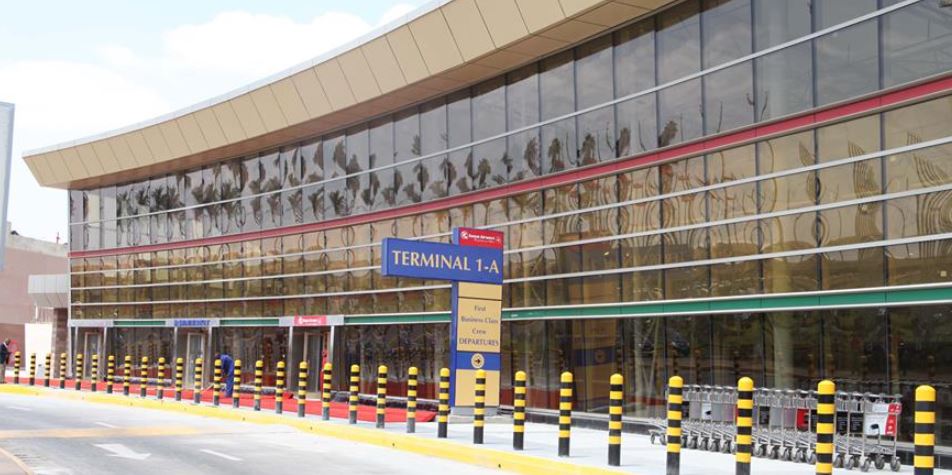At least 10,000 people are thought to have died in the central Philippine province of Leyte after Typhoon Haiyan, one of the strongest storms ever to make landfall, lashed the area, swallowing coastal towns, a senior police official said early on Sunday morning.
About 70-80% of the buildings in the area in the path of Haiyan in Leyte province was destroyed, said chief superintendent Elmer Soria. “We had a meeting last night with the governor and the other officials. The governor said based on their estimate, 10,000 died,” he said.
Tacloban city administrator Tecson Lim said that the death toll in that city alone “could go up to 10,000”. Tacloban is the provincial capital of Leyte, with a population of more than 200,000. The Philippine Red Cross said in Tacloban bodies had been found “piled up around the roads” and in churches. Between 300 and 400 bodies had been recovered, Lim said.
On Samar island, which faces Tacloban, Leo Dacaynos of the provincial disaster office told Associated Press on Sunday 300 people were confirmed dead in Basey town and another 2,000 were missing.
He said the storm surge caused sea waters to rise 20 feet when the typhoon hit. There were still towns on Samar that had not been reached, he said, and appealed for food and water. Power was knocked out and there was no mobile signal, making communication possible only by radio.
Many corpses hung on tree branches, buildings and sidewalks, Associated Press reported.
“On the way to the airport we saw many bodies along the street,” said Philippine-born Australian Mila Ward, 53, who was waiting at the Tacloban airport to catch a military flight back to Manila.
“They were covered with just anything tarpaulin, roofing sheets, cardboards,” she said. Asked how many, she said, “Well over 100 where we passed.”
The super-typhoon made landfall on Samar and Leyte islands in the eastern Visayas at about 4.40am on Friday local time, with winds up to 315km/h (195 mph) tearing roofs off buildings, turning roads into rivers full of debris and knocking out electricity pylons.
With many provinces left without power or telecommunications, and airports in the hardest-hit areas, such as Tacloban, in tatters, experts say it is impossible to know the extent of the storm’s damage – or deliver badly needed aid.
Roughly 12 hours after the 600 km (370-mile)-wide Haiyan blew west towards Vietnam, where it is expected to make landfall early on Sunday, officials and aid workers are only now beginning to piece together details on the number of dead and injured.
Government figures showed that more than 4 million had been directly affected. The World Food Programme has mobilised some $2m (£1.25m) in aid and aims to deliver 40 tonnes of fortified biscuits to victims within the next few days.
Satellite images show normally green patches of vegetation ripped up into brown squares of debris in Tacloban, where local TV channel GMA broadcast images of huge storm surges, flattened buildings and families traipsing through flooded streets with their possessions held high above the water.
The head of the UN Disaster Assessment Coordination Team, Sebastian Rhodes Stampa, described “destruction on a massive scale” in the city of 220,000 and said: “The last time I saw something of this scale was in the aftermath of the Indian Ocean tsunami. There are cars thrown like tumbleweed and the streets are strewn with debris.”
Al-Jazeera correspondent Jamela Alindogan was trapped in her hotel as the eye of the storm passed overhead and ripped the roof off the building. Evoking scenes of chaos as badly hurt victims wandered the streets without medicine, food or water, and doctors at the local hospital attended to the wounded in the dark without electricity or candlelight, she said: “There is no food, not even in the hotels, and there’s no water. The situation is really very desperate.”
Other sources told of victims trying to climb out from under rubble to find assistance, and mobs rampaging through the streets looking for food, water or medicine, and looting electrical goods and groceries from malls. “Almost all the houses were destroyed,” said Major Rey Balido of the Philippines national disaster agency. “Only a few are left standing.”
Relatives of those living in the typhoon’s path have had no news from their loved ones and are nervously waiting until power is restored to the area. “I spoke to my mother just a few hours before the typhoon made landfall in my city, Tacloban,” said taxi driver Sherwin Martinata, 32, in the capital, Manila. “She was saying she was all right but now I have no idea if my family is safe. There is no power, no phones. I can’t get through at all. I’m worried, but I’m powerless.”
Those living in the hardest-hit areas, such as the eastern Visayas, are among the poorest in the Philippines, say aid agencies, who warn that there will be little or no savings for many of the victims to fall back on – putting an already vulnerable population at even greater risk of future food and job insecurity.
On Bohol island – where a 7.3-magnitude earthquake toppled colonial-era churches and killed some 200 people last month – residents were successfully evacuated ahead of the storm and as a result many lives were probably saved, said Mathias Eick of the European commission’s humanitarian aid department (Echo). However, because the island’s main power supply comes from neighbouring Leyte, residents are still without electricity or water.
In Tacloban, where many residents live along the coast, the sheer force of the storm was just too much for the buildings to withstand, with evacuation centres such as stadiums and churches later collapsing. “The sheer magnitude and scale of the disaster sort of overpowered all the contingency measures, and we’re fearing that we’ll be finding more dead bodies in those evacuation centres themselves,” said Alwynn Javier of Christian Aid.
Without information on the ground or access to hard-hit areas, aid agencies have been stuck, not knowing how much aid is needed or which areas need it most.
“The only information we have been able to get so far is from the UN and some from the news,” said Javier. “We should have good ground reach, but are really impeded by this lack of access because even our partners on the ground have been hit themselves.”
Officials and rescue workers hoped that Sunday would see concerted efforts by authorities to set up command centres and rescue groups, which will in turn help bring supplies to those who need them most. But gaining access to those areas will prove hard, said Richard Gordon of the Philippine Red Cross, who added that without bulldozers or tractors to clear paths, volunteers will have to bring cutting equipment to clear uprooted trees and debris.
The Philippines sees roughly 20 typhoons every year, with some more devastating than others. Last year’s Typhoon Bopha killed more than 1,100 people and caused over $1bn in damage.
Haiyan – the 25th typhoon to hit the Philippines this year – is expected to make landfall in several provinces in central Vietnam with winds around 220km/h (137 mph). More than 450,000 troops have been deployed, as well as 12 planes, 356 ships and thousands of vehicles, in order to mobilise supplies, with more than 300,000 people evacuated in Da Nang and Quang Ngai provinces.
“It may be the strongest storm to hit Vietnam in history,” said Vietnam’s director of the Central Hydro-Meteorological Forecasting Centre in Bui Minh Tang. Coastal areas should expect to see waves as high as 5-8 meters (16-26ft) and a wind radius up to 500 km wide, officials warned.
– Guardian







